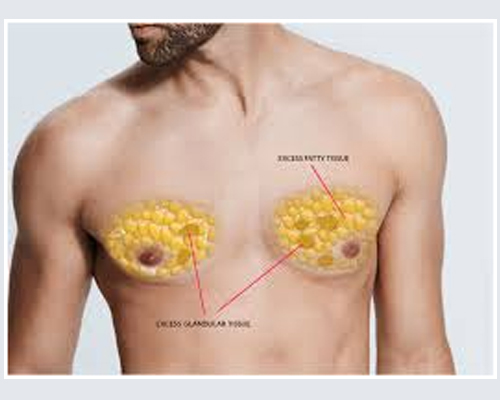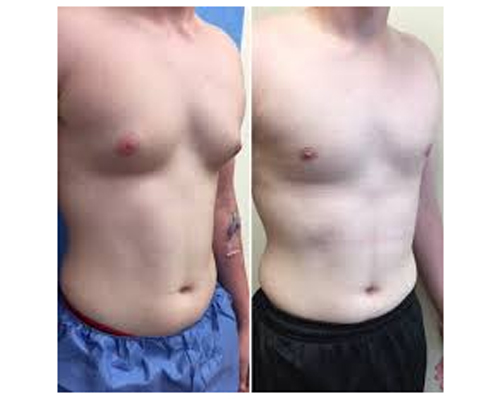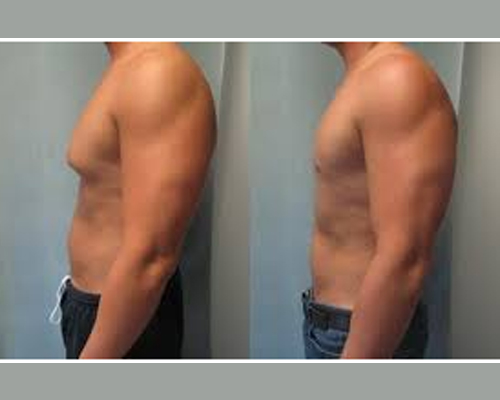
Gynaecomastia (sometimes referred to as "man boobs") is a common condition that causes boys' and men's breasts to swell and become larger than normal. It is most common in teenage boys and older men.
What are the signs of gynaecomastia?
Signs vary from a small amount of extra tissue around the nipples to more prominent breasts. It can affect one or both breasts.
Sometimes, the breast tissue can be tender or painful, but this isn't always the case.
What causes gynaecomastia?
Hormone imbalance
Gynaecomastia can be caused by an imbalance between the sex hormones testosterone and oestrogen. Oestrogen causes breast tissue to grow. While all men produce some oestrogen, they usually have much higher levels of testosterone, which stops the oestrogen from causing breast tissue to grow.
If the balance of hormones in the body changes, this can cause a man's breasts to grow. Sometimes, the cause of this imbalance is unknown.
Obesity
Being very overweight (obese) is a common cause of gynaecomastia – this is because being overweight can increase levels of oestrogen, which can cause breast tissue to grow. If you're overweight you're also more likely to have excess fat that can enlarge the breast tissue. For some people losing weight or doing more exercise can help but this may not always improve the condition.
Older age
As men get older, they produce less testosterone. Older men also tend to have more body fat, and this can cause more oestrogen to be produced. These changes in hormone levels can lead to excess breast tissue growth.
Other causes
Other rare causes of gynaecomastia include:
- side effects of medicine – such as anti-ulcer drugs or medicine for heart disease
- illegal drugs – such as cannabis or anabolic steroids
- drinking too much alcohol
- a health condition – such as kidney failure or liver disease
- Klinefelter syndrome (a rare genetic disorder)
- lumps or infection in the testicles
Anesthesia
Medications are administered for your comfort during the surgical procedures. The options include intravenous sedation and general anesthesia. Your doctor will recommend the best option for you.
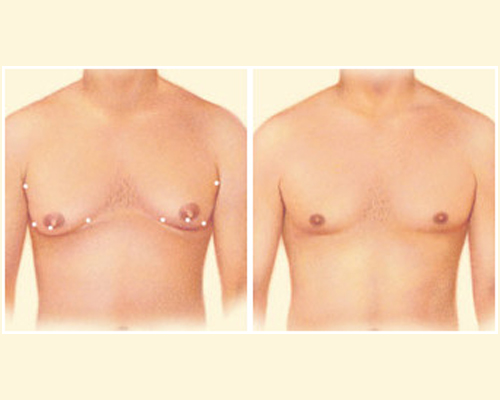
Liposuction technique
In cases where gynecomastia is primarily the result of excess fatty tissue, liposuction techniques alone may be used. This requires insertion of a cannula, a thin hollow tube, through several small incisions.The cannula is moved back and forth in a controlled motion to loosen the excess fat, which is then removed from the body by vacuum suction.
There are various liposuction techniques that may be used; the technique most appropriate in your case will be defined prior to your procedure.
Excision technique
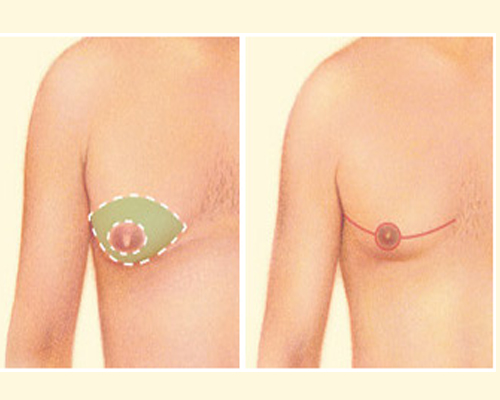
Excision techniques are recommended where glandular breast tissue or excess skin must be removed to correct gynecomastia. Excision also is necessary if the areola will be reduced or the nipple will be repositioned to a more natural male contour. Incision patterns vary depending on the specific conditions and surgical preference.
Combination of liposuction & excision techniques
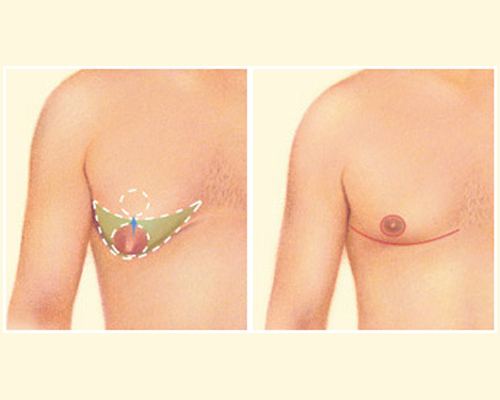
Sometimes gynecomastia is treated with both liposuction and excision.
Male chest reduction surgery is becoming increasingly popular among men facing overly enlarged breasts as more and more learn about the impact it can have on self confidence.
- Increased self-confidence.
- Improved overall body proportion
- Flatter, firmer and better contoured chest
- A wider choice of fitting clothes
- Free from psychological discomfort associated with large breasts
